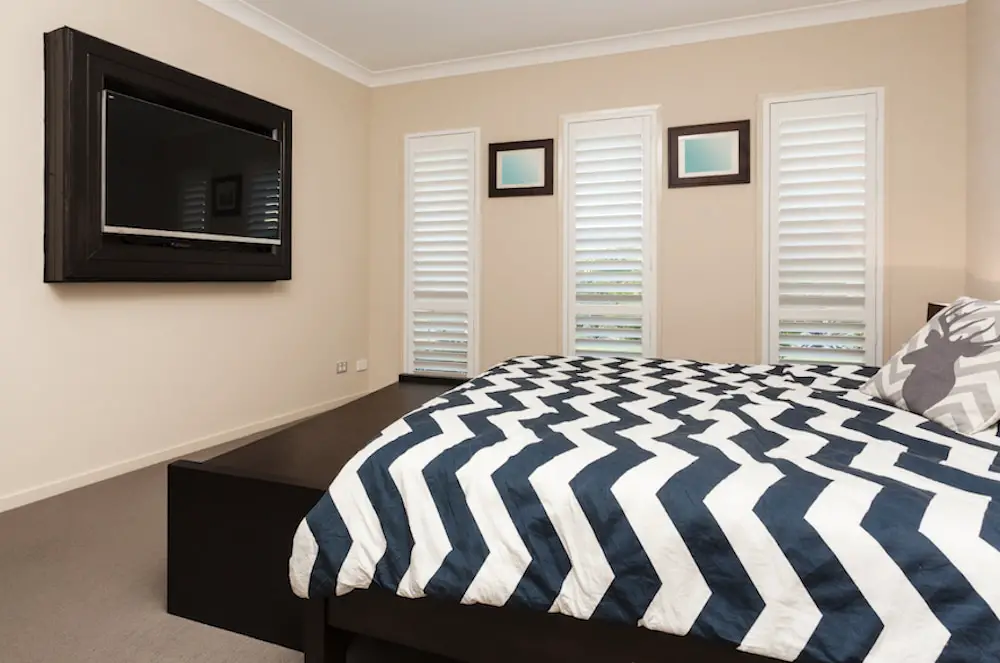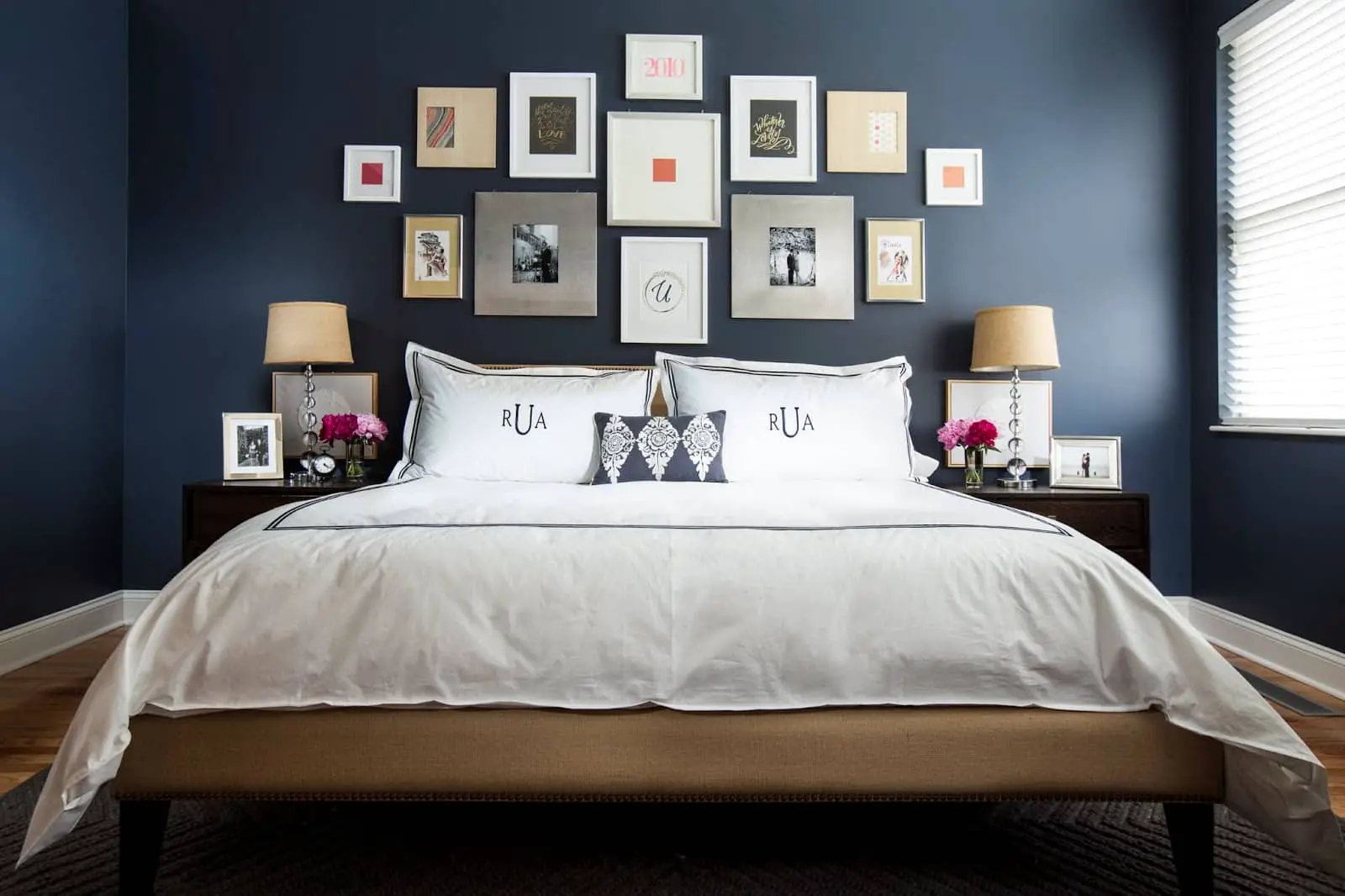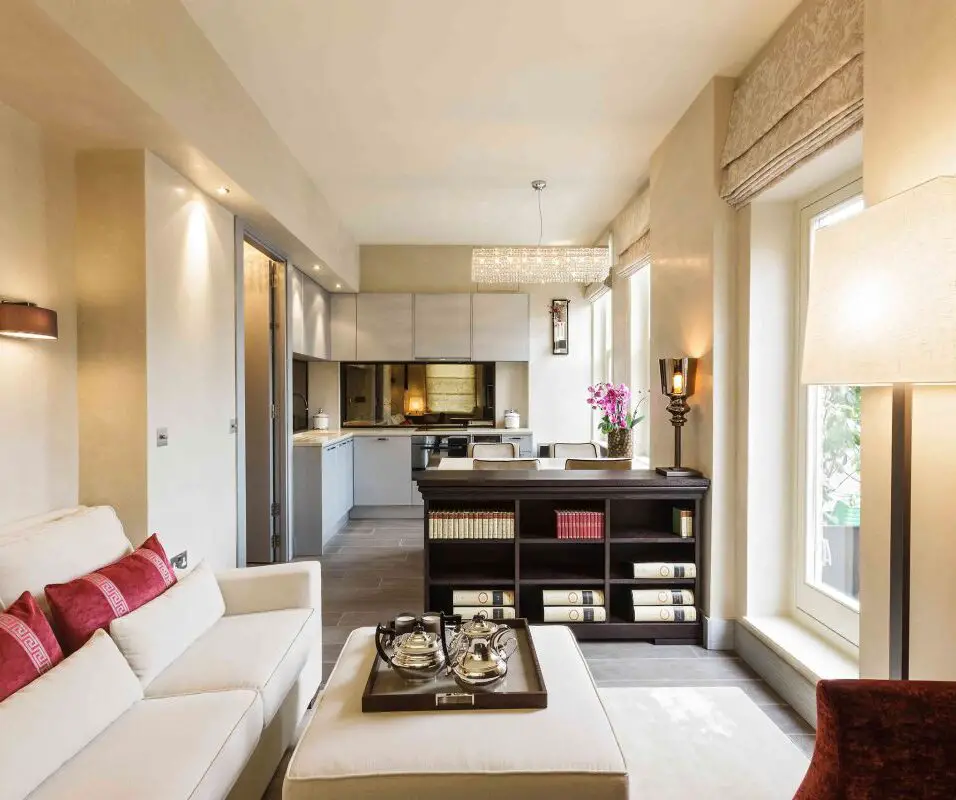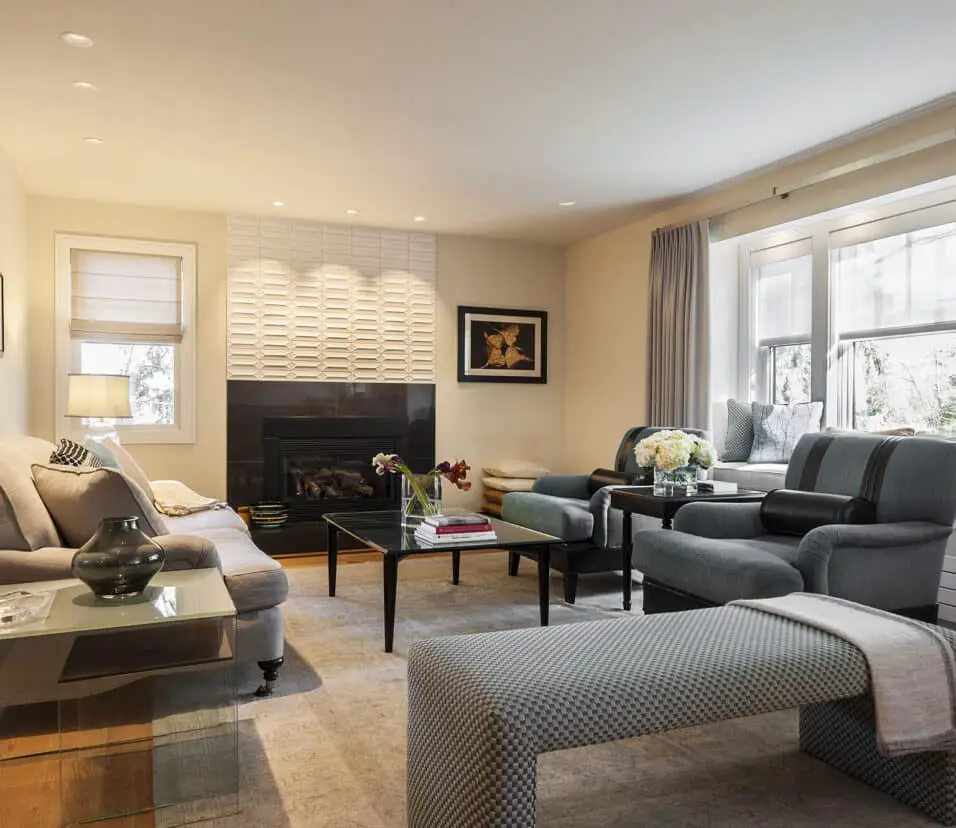How To Arrange Bedroom Furniture In A Square Room
Introduction
How To Arrange Bedroom Furniture In A Square Room: Whether you prefer placing the bed against a wall, in the center of the room, or diagonally, we will explain the pros and cons of each approach. As we move on, we will explore clever space-saving techniques, especially important in square rooms where every inch matters. From selecting space-efficient furniture pieces to integrating built-in storage solutions, you’ll discover how to maximize functionality while maintaining a visually pleasing aesthetic.
To create a balanced and harmonious atmosphere, we will cover the arrange furniture of additional items, such as dressers, nightstands, desks, and seating areas. We’ll discuss the significance of furniture scale and proportion, ensuring that each piece complements the room’s overall design without overwhelming the space. As we progress through the guide, we will also touch upon the importance of creating designated zones within your square bedroom, allowing you to transform areas for relaxation, work, and leisure seamlessly.
Furthermore, we’ll explore the significance of color schemes, lighting, and accessories in enhancing the ambiance of your square bedroom. By incorporating these elements strategically, you can infuse your personal style while maintaining a cohesive and inviting space. Whether you’re aiming for a contemporary, minimalist, or cozy, bohemian feel, this guide will equip you with the knowledge and inspiration to achieve your desired bedroom layout in a square room.

How do I arrange my square room?
In a square room, the bed is the focal point when placed in the middle. When doing so, make sure that the rest of the room follows this lead, by placing the tv, or a fireplace for example, on the opposite wall in the middle as well.
Assess the Room:
Before diving into rearranging your square room, take some time to assess its dimensions and features. Measure the length and width of the room, as well as the height of the walls. Note any architectural elements such as windows, doors, and built-in closets, as they will influence your furniture placement.
Create a Floor Plan:
A floor plan is a valuable tool that allows you to visualize different furniture arrangements without physically moving heavy pieces. You can sketch the room on paper or use various online tools and apps to create a digital floor plan. This will help you experiment with different layouts before committing to one.
Identify the Focal Point:
Determine if there’s a natural focal point in the room, such as a fireplace, a large window with a view, or a statement piece of furniture. Placing your main furniture, like the bed or seating area, around the focal point can create a cohesive and inviting arrangement.
Decide on Bed Placement:
Since the bed is typically the largest piece of furniture in a bedroom, it’s crucial to choose the right spot for it. You can place it against a wall to free up floor space, in the center of the room for symmetry, or diagonally for a touch of uniqueness. Consider the flow of the room and how you’ll navigate around the bed.
Utilize the Corners:
In a square room, the corners are valuable spaces that are often underutilized. Consider placing corner shelves, a cozy reading nook, or a small desk in these areas. This will not only optimize space but also add character to your room.
Balance the Furniture:
Strive for a sense of balance and harmony when arranging your furniture. If you have a large bed on one side of the room, balance it with a dresser or a seating area on the opposite side. Keep the room visually pleasing by avoiding overcrowding on one side.
How to arrange bedroom furniture in a rectangular room?
How To Arrange Bedroom Furniture In A Rectangular Room
- Placed Against The Longest Wall.
- Placed Against The Shortest Wall.
- Placed Under Windows.
- Create A Focal Point With The Bed.
- Choose The Right Size Nightstands.
- Create Sections Using Floor Rugs.
- Place A Dresser Away From The Bed For Better Balance.
Determine the Focal Point:
Identify the natural focal point of the room, such as a large window with a view, a fireplace, or a prominent architectural feature. The bed is often considered the primary focal point in a bedroom, so consider positioning it in a way that draws attention to the room’s main attraction.
Decide on Bed Placement:
The bed’s placement is crucial in a bedroom as it sets the tone for the entire layout. If the room has a single long wall, consider placing the bed against it for a classic look. For a more balanced feel, position the bed on the shorter wall, leaving enough space on both sides for nightstands.
Balance the Furniture:
Achieve visual balance by distributing furniture evenly throughout the room. Avoid placing all the large pieces on one side, as this can make the room feel lopsided. Instead, balance the bed with other essential pieces like dressers, armoires, or seating areas.
Utilize the Space:
In a rectangular room, it’s crucial to use the available space efficiently. Opt for furniture with clean lines and streamlined designs to avoid overpowering the room. Consider utilizing vertical space with tall dressers or bookshelves to maximize storage without sacrificing floor space.
Create a Seating Area:
If you have enough space, consider adding a seating area to create a cozy nook for relaxation or reading. Place a small sofa, armchairs, or a chaise lounge at the foot of the bed or along one of the longer walls to add functionality and elegance to the room.
When arranging the bedroom furniture the bed should be placed?
The most natural focal point of this vital space in your house is the bed. Many people prefer to position their beds centrally against the wall that is directly opposite to the door. But, if the size and shape of your bed don’t allow you to do that, you can place it against the longest wall in the room.
Against a Wall:
Placing the bed against a wall is a classic and space-saving option, particularly in smaller bedrooms or those with limited floor space. By positioning the bed against one of the walls, you free up the central area, making it easier to move around and leaving room for other furniture pieces. This arrangement is also practical for bedrooms with multiple doors or windows along the walls.
In the Center:
Placing the bed in the center of the room can create a balanced and symmetrical layout, especially in larger bedrooms. This arrangement allows for equal space on all sides of the bed, providing a sense of openness and grandeur. It can also be visually appealing if you have a striking headboard or a canopy bed that you want to showcase.
Diagonally:
Placing the bed diagonally in the room can add a touch of uniqueness and drama to the bedroom. This positioning can work well in square or rectangular rooms, as it breaks away from the conventional parallel-to-the-wall arrangement. However, it’s essential to ensure that there is enough space for easy access around the bed.
With Headboard Against the Longest Wall:
If you have a longer rectangular room, consider placing the bed with its headboard against one of the longer walls. This arrangement can create a sense of coziness and intimacy, particularly if the room is narrow. It also leaves more open space on either side of the bed for other furniture or decor elements.
With Headboard Against the Shortest Wall:
Alternatively, in a rectangular room, you can place the bed with its headboard against one of the shorter walls. This arrangement can work well when you have a beautiful view or a focal point, such as a large window or a piece of artwork, on the opposite wall.
Where should a bed be placed in a square bedroom?
Interior designers will tell you that the positioning of the bed depends on the size and proportions of the bedroom. “If the floor plan is square, then it’s best to place the bed on the central axis,” Russian designer Julia Golavskaya says.
Against a Wall:
Placing the bed against one of the walls is a popular and practical option for square bedrooms. This arrangement maximizes floor space, making it easier to move around the room and leaving more room for other furniture and decor. Positioning the bed against a wall also provides a cozy and intimate feel, creating a sense of security.
Diagonal Placement:
Placing the bed diagonally in the room can be an excellent choice for a square bedroom, as it adds a unique and dynamic element to the layout. This arrangement can create a sense of movement and visual interest, breaking away from the conventional parallel-to-the-wall positioning. However, keep in mind that this placement may require more floor space and may not be suitable for smaller square bedrooms.
Centered on One Wall:
If your square bedroom is large enough, consider placing the bed centered on one of the walls. This creates a balanced and symmetrical look, especially when combined with matching bedside tables and lamps. Centering the bed can also highlight a beautiful headboard or artwork above the bed, making it a focal point in the room.
Centered in the Room:
In spacious square bedrooms, you can place the bed in the center of the room, away from the walls. This positioning can create a luxurious and grand feel, especially if you have a canopy or four-poster bed. However, make sure to leave enough space around the bed for easy movement and to accommodate other furniture pieces.
Utilizing Corners:
Square bedrooms often have corners that can be utilized creatively. Placing the bed in a corner can create a cozy and snug sleeping area. You can add a headboard or wall-mounted shelf to the corner, making it a stylish and functional focal point.
How to arrange bedroom furniture according to Vastu?
- Place Your Bed in South or East Direction.
- Place Almirahs in the Southwest Direction.
- Avoid Keeping Electric Appliances in the Bedroom.
- Always Open the Door Completely.
- Ensure Doors Don’t Creak.
- Redecorate Your Child’s Room.
- Beds and Mirrors Shouldn’t Go Together.
- Don’t Use Dark Wallpaper Near the Bed.
The bed is the most important piece of furniture in the bedroom, and its placement is crucial for promoting restful sleep. According to Vastu, the ideal position for the bed is the south or west direction. Placing the bed with the headboard to the south or west wall is considered auspicious and promotes better sleep and overall health. Avoid placing the bed directly under a beam or sloping ceiling, as it can create negative energy.
Ensure that your head points towards the east while sleeping. Sleeping with your head towards the north is not recommended, as it is believed to disrupt the body’s magnetic field and can lead to health issues.
A clutter-free bedroom is essential for positive energy flow according to Vastu. Keep the bedroom tidy and organized, and avoid storing unnecessary items under the bed, as it can block the flow of energy.
Choose bedroom furniture with rounded edges and avoid sharp corners. Rounded furniture is considered more soothing and conducive to a peaceful atmosphere. Additionally, opt for wooden furniture, as it represents the Earth element and promotes grounding energy.
Avoid placing mirrors in the bedroom, especially in front of the bed. Mirrors are believed to reflect and multiply energy, which can disrupt sleep and create restlessness.
If possible, place the wardrobe in the south or west direction of the bedroom. Avoid placing it in the northeast corner, as it can block positive energy flow.

When arranging furniture in a bedroom which furniture item should be placed first?
Arrange Your Bedroom Furniture With These Planning Tips
Here are a few general tips to keep in mind when planning the bedroom layout for furniture: Start by placing the bed in the center of the room. This is usually the most significant piece of furniture, so it’s best to use it as the starting point for your design.
As mentioned earlier, the bed is the primary focal point of the bedroom. It is where you’ll spend the majority of your time resting and rejuvenating, and it plays a significant role in defining the room’s purpose. Placing the bed first allows you to identify the best position for it, taking into account factors like natural light, room flow, and any architectural features.
Once the bed is in place, you can assess how much space is left for other furniture items. By starting with the largest piece of furniture, you avoid the common mistake of overcrowding the room with smaller items and ensure that there’s ample space for movement and other essentials.
Placing the bed first allows you to consider the bedroom’s flow and functionality. You can visualize how you’ll move around the room and access other furniture pieces with the bed as the central point of reference. This ensures that the layout is practical and user-friendly.
The bed’s placement significantly impacts the room’s overall aesthetics and style. Whether you prefer a classic, modern, or eclectic look, positioning the bed appropriately will help you achieve the desired ambiance and atmosphere.
After arranging the essential furniture, you can add decorative elements like rugs, artwork, curtains, and pillows to enhance the room’s style and personality.
How to style a bedroom with wooden furniture?
Pair wood furniture with painted pieces.
Especially with dark finishes such as cherry or walnut, using too many wood pieces can give the space a heavy, overcrowded look. If you inherited an entire bedroom set of wood furniture, choose one standout piece—such as the bed or dresser—to keep in the room and ditch the rest.
Choose the Right Wood:
Wooden furniture comes in various types of wood, each with its unique grain pattern and color. Consider the type of wood that best complements your desired style. For a rustic or farmhouse look, opt for reclaimed or distressed wood. For a more modern and sleek aesthetic, choose furniture made from darker woods like mahogany or walnut.
Balance with Other Materials:
To prevent the room from feeling too heavy or monotonous, balance the wooden furniture with other materials. Introduce soft textiles like plush rugs, cozy bedding, and curtains in complementary colors. Incorporate metal accents, such as brass or copper, to add a touch of elegance and contrast to the warm tones of the wood.
Choose a Neutral Color Palette:
When styling a bedroom with wooden furniture, opt for a neutral color palette to create a calming and harmonious environment. Soft beige, warm gray, or cream tones on the walls and bedding will complement the wood beautifully and make the room feel cozy and inviting.
Layer Textures:
Mix and match different textures to add depth and interest to the bedroom. Incorporate a variety of fabrics, such as linen, cotton, and velvet, in your bedding, curtains, and throw pillows. Consider adding a woven basket or rattan chair to introduce natural textures that complement the wood.
Where should a mirror be placed in a bedroom?
Where to put a mirror in a bedroom – 5 expert-led tips
- Avoid placing a mirror opposite your bed.
- Avoid placing mirrors opposite a doorway.
- Avoid the mirror reflecting clutter.
- Avoid mirrors completely or keep them hidden.
- Place a mirror near a window.
Placing a mirror directly across from the bed is a common and practical choice. This placement not only adds a sense of symmetry to the room but also reflects the bed, creating the illusion of a larger and more open space. However, some people may prefer not to have a mirror facing the bed, as it can be distracting or disrupt the peaceful atmosphere.
If your bedroom has a closet or wardrobe with sliding or hinged doors, consider using mirrored doors. This not only provides a functional full-length mirror but also helps to make the room feel more spacious. Mirrored closet doors are especially beneficial in smaller bedrooms, as they can create the illusion of depth.
Leaning a full-length or oversized mirror against the wall can add a chic and relaxed vibe to the bedroom. This style of placement works well in bohemian or eclectic interiors, creating an effortless and artistic look.
Placing a mirror above the dresser or a vanity table is a practical option for getting ready in the morning or before going out. This positioning provides a dedicated space for grooming and allows you to see your reflection while organizing jewelry or applying makeup.
Hanging a mirror on the wall opposite a window can help amplify natural light and brighten the room. The mirror will reflect the light from the window, making the bedroom feel more airy and illuminated.

Conclusion
By understanding the dimensions and unique features of your room, you can create a layout that optimizes space and maximizes functionality. The bed, as the focal point, plays a pivotal role in determining the overall flow of the room. Whether you choose a wall placement for a traditional feel, a central placement for symmetry, or a diagonal orientation for a touch of drama, each option brings its charm and benefits.
Incorporating space-saving techniques and choosing furniture with the right scale and proportion ensures that every piece serves a purpose without overwhelming the room. Clever storage solutions keep clutter at bay, allowing you to maintain a serene and inviting environment. Creating distinct zones within your square bedroom allows you to personalize each area for specific activities, whether it’s for relaxation, work, or hobbies. Thoughtful use of color schemes, lighting, and accessories elevates the ambiance and brings your desired style to life.
Remember that while design principles can guide you, there are no strict rules in personalizing your bedroom. It’s essential to consider your preferences and needs, allowing your space to become an extension of yourself. As you embark on arranging your square room furniture, take your time to experiment with different layouts and furniture arrangements. Be open to change and adjustments until you find the perfect arrangement that resonates with you.








